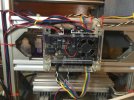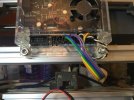A bit of an “oops”. I was using my little cheapo miller to do some repeat work on the axleboxes and hornguides for the loco chassis I’m building at the moment (see my workbench for CSB chassis) and having finished the axleboxes & horns, had a work meeting, and simply left the machine on my bench, all plugged in, but not running.
I came back to it about three hours later and set up to do the next part of the suspension - the vertical bars with a hole at one end that are soldered to the axlebox and link it to the CSB wire. Much faffing with G-clamps and toolmakers’ clamps and bits of wood and V blocks, etc, finally arriving at a set up where I can drill the hole, and then mill the piece off the end of the strip, loosen the vice, slide the strip along, tighten and repeat. I jog the machine around to convince myself that my “usine a gas” won‘t crash, and hit M3 to run the spindle to drill the first hole.
it spins almost slowly enough to count the revs. Much head scratching, it seems that for whatever reason, the spindle control is now outputting 1.04V in place of the ~24V that is expected. Don’t know what has died, nor indeed, why. Hopefully one of my team at work, who understands the arcane ways of silicon, will be able to fix it. Meanwhile I ordered another controller from Amazon, so hopefully I can make it work.
So, dismantling photos…
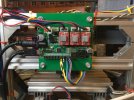
axis drives labelled and unplugged
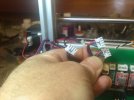
And a close-up of the axis limit switches connections.
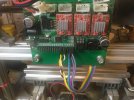
I believe it doesn’t matter which way the switches are connected, because it “knows” which way it’s going, but in any case,
Zen, Y & O are Z-zero, fully up
-
Yen, Bk & W are Y-zero, table fully back.
-
Xen, Bu & Gn are X-zero, head fully left
Xen, Gy & Pu are X-max, head fully right.
I have not yet fitted an emergency stop, but it connects to A0. The new board has a different connection for that, which I will set up.
I’ve been using “Universal Gcode Platform” as a controller. It’s convenient as it allows the use of a mobile phone as a cordless pendant.
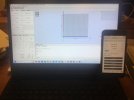
I’ll add the rebuild when the new controller arrives.





